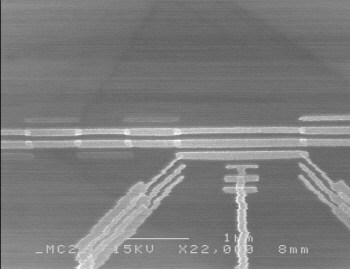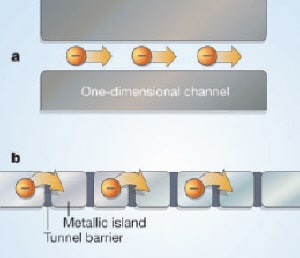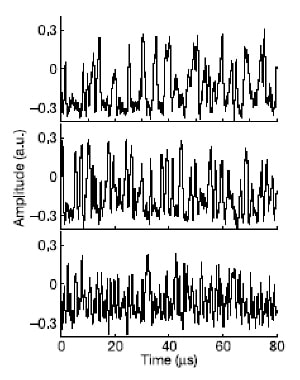Physicists in Sweden have counted individual electrons in an electrical current for the first time. Jonas Bylander, Tim Duty and Per Delsing at Chalmers University of Technology in Goteborg directly measured the oscillations associated with single electrons in a one-dimensional chain of superconducting "islands" connected by tunnel junctions. The technique could lead to the development of a new standard for electric current (J Bylander et al. 2005 Nature 434 361).

Single-electron tunnelling events have been observed in experiments with tunnel junctions before now, but the electrons making up the current have never been directly counted one by one. In a tunnel junction two conducting islands of material are separated by thin insulating layers, through which the electrons can quantum mechanically tunnel. Since like charges repel, the electrons are forced to tunnel one by one through the junction.
The new experiment also relies on tunnel junctions. Delsing and co-workers began by making a superconducting array that contained a one-dimensional chain of 50 tunnel junctions made of aluminium (figure 1). Electrons were only able to move through the array in one direction (figure 2).
Next, the Chalmers team coupled a single-electron transistor (SET) to one of the islands and injected a current into the array. As the individual electrons pass the island, they modulate the source-drain current in the SET and this, in turn, modulates the radio-frequency power in the SET. By measuring these changes, Delsing and colleagues were able to detect single-electron oscillations in real time (figure 3).
According to the team, the technique could provide a new quantum-based primary standard for current. The oscillation frequency, f, is related to the current, I, by a simple equation, I = e f, where e is the charge on the electron. “This would close the so-called quantum metrological triangle that relates current, voltage and frequency,” says Bylander. Voltage and frequency can be related through the AC Josephson effect, while current and voltage can be related through the quantum Hall effect, with both these relationships including the same two fundamental constants — the Planck constant and the charge on the electron.





